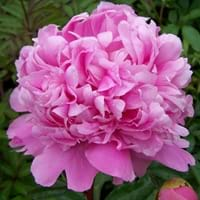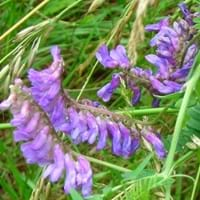Origin
China, Japan
Europe, Asia
Types
Not Available
Not Available
Number of Varieties
Not Available
Habitat
Grassland, Woods
agricultural areas
USDA Hardiness Zone
3-9
3-7
Sunset Zone
A1, A2, A3, 1a, 1b, 2a, 2b, 3a, 3b, 4, 5, 6, 7, 8, 9, 10, 11, 14, 15, 16, 17, 18, 19, 20
Not Available
Habit
Upright/Erect
Prostrate/Trailing
Flower Color
Light Pink, Pink, White
Purple, Violet
Flower Color Modifier
Not Applicable
Bicolor
Fruit Color
Brown, Brownish Red, Green
Not Available
Leaf Color in Spring
Green, Light Green
Green, Light Green
Leaf Color in Summer
Red, Green, Light Green
Green, Light Green
Leaf Color in Fall
Red, Green, Light Green
Green, Light Green
Leaf Color in Winter
Green
Light Green
Leaf Shape
Arrowhead
Compound
Plant Season
Early Fall
Spring, Summer
Sunlight
Full Sun, Partial shade
Full Sun, Partial Sun
Growth Rate
Medium
Very Fast
Type of Soil
Loamy, Well drained
Clay, Loam, Sand
The pH of Soil
Neutral
Acidic, Neutral, Alkaline
Soil Drainage
Moist
Average
Bloom Time
Early Summer, Late Spring, Spring, Summer
Late Spring, Early Summer, Summer
Tolerances
Cold climate, Heat Tolerance
Drought
Where to Plant?
Ground, Pot
Ground
How to Plant?
Budding
Seedlings
Plant Maintenance
Medium
Medium
Watering Requirements
Requires regular watering
Average Water Needs
In Summer
Lots of watering
Lots of watering
In Spring
Moderate
Moderate
In Winter
Average Water
Average Water
Soil Type
Loam
Well drained
Soil Drainage Capacity
Well drained
Well drained
Sun Exposure
Full Sun, Partial Sun
Partial shade
Pruning
Remove damaged leaves, Remove dead branches, Remove dead leaves
Remove damaged leaves, Remove dead branches, Remove dead leaves
Fertilizers
All-Purpose Liquid Fertilizer
All-Purpose Liquid Fertilizer
Pests and Diseases
Botrytis Blight, Nematodes, Ring spot, Stem rot, Verticillium Wilt
Red blotch
Plant Tolerance
Drought
Drought
Flower Petal Number
Not Available
Single
Foliage Texture
Coarse
Fine
Foliage Sheen
Glossy
Matte
Attracts
Ants
Butterflies
Allergy
Abdominal pain, Avoid during Pregnancy, Stomach pain, Vomiting
Not Available
Aesthetic Uses
Landscape Designing, Showy Purposes
Not Available
Beauty Benefits
Not Available
Not Available
Environmental Uses
Air purification
Erosion control
Medicinal Uses
Atherosclerosis, Chronic fatigue, Cold, Cough, Gout, Headache, hemorrhoids, Hepatitis, Liver problems, Menstrual Cramps, Muscle Pain, Nerve pain, Osteoarthritis, Premenstrual syndrome, Respiratory Disorders, Treating fever
Not Available
Part of Plant Used
Flowers, Root, Seeds
Root, Stem
Other Uses
Showy Purposes, Traditional medicine, Use in Chinese herbology
cultivated as pasture or hay crop
Used As Indoor Plant
Sometimes
No
Used As Outdoor Plant
Yes
Yes
Garden Design
Cutflower, Feature Plant, Foundation, Mixed Border
Groundcover
Botanical Name
Paonia lactiflora
VICIA villosa 'Purple Bounty'
Common Name
Chinese Peony
Hairy Vetch, Purple Bounty Vetch
In Hindi
Paonia lactiflora
Purple Bounty Vetch
In German
Paonia lactiflora
Lila Bounty Wicke
In French
Paonia lactiflora
Violet Bounty Vetch
In Spanish
lactiflora paonia
Purple Bounty Arveja
In Greek
Paonia lactiflora
Μωβ Bounty Vetch
In Portuguese
Paonia lactiflora
Roxo recompensa ervilhaca
In Polish
Paonia lactiflora
Purpurowy Bounty Wyka
In Latin
Paonia lactiflora
Bounty purpura Vetch
Phylum
Magnoliophyta
Magnoliophyta
Class
Magnoliopsida
Magnoliopsida
Order
Dilleniales
Fabales
Family
Paeoniaceae
Fabaceae
Clade
Angiosperms, Core eudicots, Eudicots
Angiosperms, Eudicots, Rosids
Tribe
Not Available
Vicieae
Subfamily
Not Available
Faboideae
Properties of Paeonia Lactiflora and Purple Bounty Vetch
Wondering what are the properties of Paeonia Lactiflora and Purple Bounty Vetch? We provide you with everything About Paeonia Lactiflora and Purple Bounty Vetch. Paeonia Lactiflora doesn't have thorns and Purple Bounty Vetch doesn't have thorns. Also Paeonia Lactiflora does not have fragrant flowers. Paeonia Lactiflora has allergic reactions like Abdominal pain, Avoid during Pregnancy, Stomach pain and Vomiting and Purple Bounty Vetch has allergic reactions like Abdominal pain, Avoid during Pregnancy, Stomach pain and Vomiting. Compare all the properties and characteristics of these two plants. Find out which of these plant can be used as indoor plant. If you are interested to decorate your house and garden, find out aesthetic uses, compare them and select the plant which will beautify your surrounding. Along with beautification, try comparing medicinal and edible uses of Paeonia Lactiflora and Purple Bounty Vetch and you can choose the plant having best and most benefits.
Season and Care of Paeonia Lactiflora and Purple Bounty Vetch
Season and care of Paeonia Lactiflora and Purple Bounty Vetch is important to know. While considering everything about Paeonia Lactiflora and Purple Bounty Vetch Care, growing season is an essential factor. Paeonia Lactiflora season is Early Fall and Purple Bounty Vetch season is Early Fall. The type of soil for Paeonia Lactiflora is Loamy, Well drained and for Purple Bounty Vetch is Clay, Loam, Sand while the PH of soil for Paeonia Lactiflora is Neutral and for Purple Bounty Vetch is Acidic, Neutral, Alkaline.
Paeonia Lactiflora and Purple Bounty Vetch Physical Information
Paeonia Lactiflora and Purple Bounty Vetch physical information is very important for comparison. Paeonia Lactiflora height is 91.50 cm and width 91.50 cm whereas Purple Bounty Vetch height is 30.00 cm and width 60.00 cm. The color specification of Paeonia Lactiflora and Purple Bounty Vetch are as follows:
Paeonia Lactiflora flower color: Light Pink, Pink and White
Paeonia Lactiflora leaf color: Green, Light Green
Purple Bounty Vetch flower color: Purple and Violet
- Purple Bounty Vetch leaf color: Green and Light Green
Care of Paeonia Lactiflora and Purple Bounty Vetch
Care of Paeonia Lactiflora and Purple Bounty Vetch include pruning, fertilizers, watering etc. Paeonia Lactiflora pruning is done Remove damaged leaves, Remove dead branches and Remove dead leaves and Purple Bounty Vetch pruning is done Remove damaged leaves, Remove dead branches and Remove dead leaves. In summer Paeonia Lactiflora needs Lots of watering and in winter, it needs Average Water. Whereas, in summer Purple Bounty Vetch needs Lots of watering and in winter, it needs Average Water.



